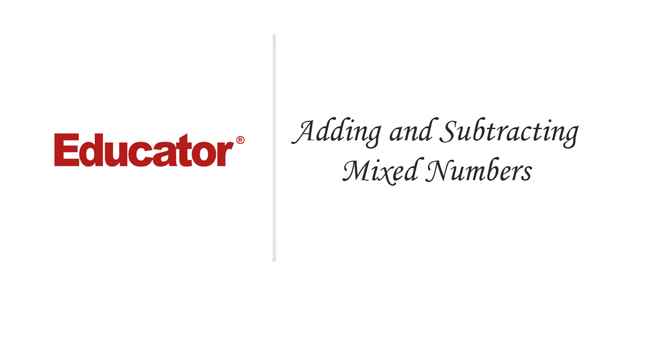Click video to play

This is a quick preview of the lesson. For full access, please Log In or Sign up.
For more information, please see full course syllabus of Basic Math
For more information, please see full course syllabus of Basic Math
Basic Math Adding and Subtracting Mixed Numbers
Lecture Description
In this lesson our instructor talks about adding and subtracting mixed numbers. She dives into explaining mixed numbers and how does one adding example. Four extra example videos round up this lesson.
Bookmark & Share
Embed
Share this knowledge with your friends!
Copy & Paste this embed code into your website’s HTML
Please ensure that your website editor is in text mode when you paste the code.(In Wordpress, the mode button is on the top right corner.)
×
Since this lesson is not free, only the preview will appear on your website.
- - Allow users to view the embedded video in full-size.
Next Lecture
Previous Lecture










































 Answer Engine
Answer Engine



1 answer
Wed Dec 18, 2019 1:06 PM
Post by Hong Yang on December 1, 2019
in the video u said on extra example 1 that u always do lcm
0 answers
Post by Karina Herrera on December 29, 2016
Thank you for another great lesson taught, Mary! :)
I like how you pace the lessons to help us follow through. It's such a bummer when a teacher is going too fast, making it harder to fully understand.
1 answer
Last reply by: Hong Yang
Sun Dec 1, 2019 11:39 AM
Post by antonio cooper on March 17, 2015
On example 4 did you mean to say and write LCM instead of LCD?
1 answer
Sat Jan 18, 2014 2:24 PM
Post by Robin Alsoffi on January 4, 2014
Since both the numbers are prime, can we just assume that the LCM would be achieved by multiplying or are there cases where that is not least? Thanks and you have given me some good tips and reminders for improving my math skills.
2 answers
Last reply by: DetectivePikachu_ yeet
Fri Nov 20, 2020 4:56 PM
Post by Aimet Ruiz on January 29, 2013
why do you hesitate